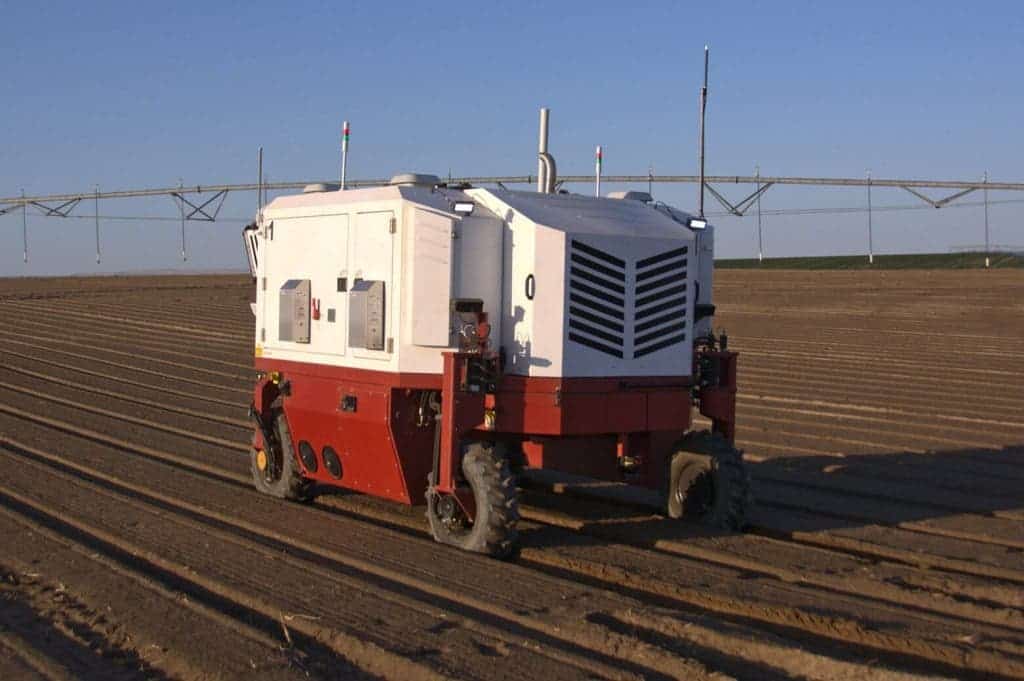Can lasers rid us of pesticides? According to Seattle-based company Carbon Robotics, they surely can. The company just presented a new generation of an “autonomous weeder,” a tractor-sized farming robot that uses cameras and lasers to kill weeds. And it’s already sold out.

Pesticides have become a common ally for farmers seeking to boost their production and rid their fields of unwanted weeds. But the widespread use of pesticides has turned them into a growing problem, as they can contaminate soil, water, turf, and other vegetation. They can kill weeds but are also harmful to other organisms such as birds, fish, and insects — sometimes, including humans.
That’s why many farmers are now moving away from the use of pesticides and are instead looking for alternative options. Consumers are also taking note, and demand for non-pesticide products is surging. While some move to organic production, others are embracing new technological developments. And this is where Carbon Robotics enters with its ground-breaking robots packed with lasers and cameras.
“AI and deep learning technology are creating efficiencies across a variety of industries and we’re excited to apply it to agriculture. Farmers, and others in the global food supply chain, are innovating now more than ever to keep the world fed,” Paul Mikesell, CEO of Carbon Robotics, said in a statement. “Our goal is to create tools to address weed management and elimination.”
The Autonomous Weeder safely and effectively drives through crop fields to identify, target, and eliminate weeds. Unlike other weeding technologies, the robots utilize high-power lasers to eradicate weeds through thermal energy, without disturbing the soil. This allows farmers to use fewer pesticides and reduce costs to remove unwanted plants.
The farming robot essentially looks like a large cube on wheels. As it drives itself down rows of crops, its 12 cameras scan the ground. An onboard computer, powered by AI, identifies weeds, and the robot’s carbon dioxide lasers then zap and kill the plants. It can eliminate more than 100,000 weeds per hour and weed 15 to 20 acres of crops in one day.
“The potential with these new robots is the highest I’ve seen with any technology as a farmer. I expect the robots to go mainstream because of how effectively they address some of farming’s most critical issues, including the overuse of chemicals, process efficiency, and labor. These robots work with a variety of crops,” James Johnson, a Carzalia Valley farmer, said in a statement.
For Carbon Robotics, farmers who deploy the robots will likely see a significant increase in crop yield and quality. The lack of herbicides and soil disruption paves the way for a regenerative approach, which leads to healthy crops and higher yields. Overall costs also decline, as the robots enable farmers to reduce the costs of manual labor and of inputs such as pesticides and fertilizers.
Incorporating the Autonomous Weeded also represents an economical path to organic farming, Carbon Robotics argued. One of the largest obstacles to organic farming is cost-effective weed control. The farming robot provides a solution to weed management that doesn’t require herbicides or an increase in manual labor, helping farmers be organic.
Still, the rise of automation in agriculture has raised the alarm for workers that rely on agriculture as a main source of income. Edgar Franks, political director at the union Familias Unidas por La Justicia, based in Burlington, Washington, told Seattle Times: “What’s going to happen to the workers who made the industry so profitable, all of a sudden to be kicked out?” Agriculture, like many fields, is finding itself at a potentially defining crossroad.
For now, Carbon Robotics sold its farming robots directly to farmers, mostly on the US West Coast so far. But it has already sold out for 2021, with new models for the 2022 growing season soon available for pre-order. The company said it was to improve further on the software side, giving farmers more access to data and real-time information.









